The moment I whispered "Uzbekistan" into the stillness of my four-walled familiarity, it seemed as if the ancient Silk Road itself rustled in response, beckoning me towards a journey measured not in miles, but in centuries. With a spirit yearning for the aroma of distant spices, I charted a 2-week Uzbekistan itinerary (and a month in its neighbours), where the echoes of caravans still resonate beneath starlit skies.
This is not just an itinerary; it’s a map of experiences, woven with threads of history and culture.

So, grab your map and your sense of adventure, as we embark on a 14-day trip that will etch the essence of Uzbekistan into your soul.
From the buzzing bazaars of Tashkent to the stillness of the Fergana Valley, from the regal tones of Samarkand to the timelessness of Bukhara, and finally to the fairy tale of Khiva — every step is a paragraph, every day a chapter, in the story that will become your epic Uzbek adventure.
Let’s set the stage of your Uzbekistan itinerary with some essentials to smooth your path, unravel the best times to wander through these ancient cities, and share some secret scrolls (or books) that will be your guides.
Before we unfurl the scroll of our Uzbekistan itinerary, let’s prepare for the journey ahead, ensuring that when you set foot on this Silk Road treasure, you’re as ready as a seasoned traveller.
Things to Know Before Travelling in Uzbekistan
Before we dive into the labyrinth of city streets and desert dreams, let’s pause to pinpoint the perfect season to visit, how to get to Uzbekistan, and then chart the modes of travel that crisscross this land.
Best Time to Visit Uzbekistan
While Uzbekistan's urban marvels offer a feast for the eyes that doesn't rely on the seasons, it's essential to consider the climate's whims. Unlike its mountainous neighbours, Uzbekistan's cities shine all year, yet they do bask under a sweltering summer sun and shiver through crisp winters that can dip below freezing.

My journey happened during April, where days were kissed by a gentle warmth and nights wrapped in a cool embrace. This time of year, away from the peak seasons, revealed a quieter, more intimate Uzbekistan, with mild temperatures that complemented the days' explorations perfectly, making spring a great time to discover the country.
How to Get to Uzbekistan
By Air
Navigating the skies from the reaches of Malaysia, I took a direct flight with Uzbekistan Airways from Kuala Lumpur, a rare gem that traverses the heavens to Tashkent once a week (in 2023, on Mondays, departing at 11am and arriving 8 hours later, at 4pm). If you, too, are plotting a similar course, the skies are your ally.
For those journeying from distant continents, the gateway to Uzbekistan typically lies through the major hubs of Europe, Asia, or the Middle East, with flights converging from cities like Istanbul, Moscow, and Dubai. From the Americas, you might weave through these connection points, piecing together a route that lands you in the heart of the Silk Road.

By Land
On the ground, Central Asia is interconnected by land as well. Bordering Kazakhstan, Kyrgyzstan, Tajikistan, Afghanistan, and Turkmenistan, Uzbekistan is a stone's throw — or rather, a road trip - away (depending on visa rules and safety, of course). Overland routes are an adventure of their own, with trains and buses threading through some neighbouring landscapes, offering a more earthbound but equally enchanting approach to entering (and exiting) Uzbekistan.
Whether you arrive by air or by the steady drum of wheels over land, the journey is part of the tale.
How to Travel around Uzbekistan
Embarking on a journey through Uzbekistan is to step onto a carousel of history, where modernity and tradition spin together in a dance of convenience and charm. The railways, like veins through the body of the land, now extend their reach to the very edges of the fabled city of Khiva, allowing you to glide through the country in the quiet comfort of modern trains or the rumbling carriages of older Russian locomotives — each a distinct experience in motion (and I enjoyed travelling in both types of train).

In a digital age, even the ancient Silk Road bends to the click of a button; I found myself navigating the Uzbekistan Railways website to buy tickets, a task that tested my patience but ultimately yielded success (with my trusty Visa card).
For the intrepid corners like the Aral Sea, where the iron tracks have yet to tread, local shared taxis (and of course, arranged tours) stand ready to ferry you around.
With each mode of transport, from the whisper of the train on the track to the steady hum of the road beneath tyres, the travel becomes as much a part of the Uzbek experience as the destinations themselves.
Staying Connected in Uzbekistan – SIM Card options
I was able to purchase a Ucell SIM card at the airport (after immigration, before leaving customs), although it required a cash payment … USD I was able to exchange at the currency stall in the same area.
Ucell proved to be a reliable service provider, surprisingly offering coverage in areas I expected to be out of range, including certain spots on train journeys. This accessibility made staying digitally connected throughout my travels in Uzbekistan both easy and convenient (particularly when it came to navigating and communication with apps).
Beeline, MTS (MTC in Cyrillic), and Perfectum Mobile are also available providers.
Solo Travel in Uzbekistan: What’s it Like?
Travelling alone in Uzbekistan was a straightforward and enriching experience. The country's well-connected transport made getting around and exploring quite manageable. I found the locals to be friendly and respectful, which added a sense of ease to my solo journey.
From the historic streets of Samarkand to the lively markets of Tashkent, each day brought a new opportunity to learn and connect, yet always at my own pace. Solo travel here allowed me the space to absorb the culture and engage with the surroundings on a personal level. I never felt unsafe or threatened.
Dangers and Annoyances in Uzbekistan
While Uzbekistan is generally a safe destination for travellers, largely the by-product of having been a police state, it's still wise to be aware of common issues.
Pickpocketing can occur, especially in crowded areas, so it's important to keep your belongings secure.
After dark, some areas may be prone to crime (in large cities especially), so it's advisable to avoid poorly lit or isolated spots if you're alone.
Be cautious if approached by locals offering to show you the "nightlife" as these offers can sometimes be scams.
However, those offering tours during daylight hours, are not necessarily deceitful.
During my visit, I encountered local students eager to practice their English, offering to show me around without expecting any payment. It's a good practice to ask questions, understand their intentions, and discuss any potential costs upfront. Often, these interactions can be authentic cultural exchanges, adding a unique dimension to your travel experience.
Want to know more about how to travel the world safely? Consider the points outlined in this article.
Recommended Books for Uzbekistan Travel Planning
When the contours of a distant land beckon, the wise traveller seeks the counsel of those who have tread its paths before.
In planning my trip to the heart of the Silk Road, I turned to the sage pages of Bradt's travel guides.
With their finger firmly on the pulse of Central Asia, they offer a tome that brims with up-to-date knowledge and local insights.
For the budget-conscious traveller, the Lonely Planet guides serve as a trusty compass — perhaps more generic, yet still somewhat valuable.
Travel Insurance for Visiting Uzbekistan
For travel to Uzbekistan (as with any destination), where the unexpected can be as much a part of the journey as the planned, securing reliable travel insurance is essential.
I've relied on World Nomads for travel insurance for nearly two decades, and I used them for my trip through Uzbekistan. Their coverage gives me peace of mind, allowing me to fully immerse myself in the experience without worry.
Uzbekistan Travel Itinerary: How to Spend 2 Weeks in the Silk Road Beauty
Over two weeks in Uzbekistan, you'll have the opportunity to explore beyond the famed trio of Bukhara, Samarkand, and Khiva. These cities are undoubtedly the main attractions for most travellers, but with more time, you can also discover the dynamic streets of Tashkent and the beauty of the Fergana Valley.
Note: If your trip is limited to one week, it's best to focus on Samarkand and Bukhara, and possibly include Khiva, though it's quite a distance from the other two.
Places to Visit in your Uzbekistan Itinerary in 2 Weeks
Traverse Uzbekistan's breadth, starting in the bustling capital of Tashkent, unwinding in the serene Fergana Valley, before delving into the historic wonders of Samarkand, the timeless allure of Bukhara, and culminating in the ancient mystique of Khiva.
TASHKENT (Days 1 & 2)
As I stepped into Tashkent, it felt like entering a world where time had been artfully woven together. Its wide, tree-lined streets and modern skyline spoke of a city marching confidently into the future, while hidden within its folds were pockets of rich history and tradition.
Exploring Tashkent was an adventure in contrasts: sleek, contemporary structures stood in dialogue with the timeless grace of ancient mosques and madrassas (Islamic schools). The Chorsu Bazaar buzzed with the energy of everyday Uzbek life, a sensory overload of sights, sounds, and smells. And for a nostalgic journey, the Soviet-era metro stations and landmarks like Hotel Uzbekistan offered me a glimpse into the city's past.


Tashkent is not just a gateway to Uzbekistan; it's a destination that deserves exploration, a city that weaves together the old and the new.
I spent three days here - two at the start, and one at the end. I could have easily stayed longer.
Accommodation - Staying in Tashkent
Budget
Topchan Hostel - For a budget-friendly stay with comfort and convenience, Topchan Hostel in Tashkent is an excellent choice for travellers looking to explore the city without breaking the bank (although it’s not in the city centre, but access isn’t hard). I readily met other travellers, partied one night with some, and gave impromptu IELTS lessons to others.

Mid-range
Hotel Uzbekistan - It’s known for its striking Soviet-era architecture and central location, providing a unique mid-range option that combines a glimpse into the country's history with contemporary convenience.
High end
The Hyatt Regency - It epitomises top-end accommodation, offering guests a luxurious oasis with its elegant rooms, top-notch amenities, and impeccable service in the heart of the city.
Transportation - Getting around Tashkent
Getting around Tashkent is fairly easy.
Metro
The Tashkent Metro is one of the easiest, most efficient, and aesthetic ways to get around the city. It has three lines and covers most major areas of the city. The trains are clean, fast, and cheap, with a one-way ticket costing only 1,200 UZS (approximately $0.12 USD).

On foot
Tashkent is a relatively walkable city, and it’s a great way to explore and get a feel for its atmosphere. Many of the city's top attractions are located within walking distance of each other.

Taxi
Taxis are widely available in Tashkent, and they can be a good option for getting around quickly and comfortably. They can be hailed on the street or booked through a taxi company, and prices are usually negotiated with the driver before the ride.
Marshrutka
Marshrutkas are shared minivans that run on specific routes throughout the city. They can be a cheap and convenient option for getting around, but they can also be crowded and uncomfortable during peak hours.
Yandex app
Yandex is a popular ride-hailing app in Uzbekistan (akin to Uber in other parts of the world). The app allows you to book rides from licensed drivers, and prices are usually fixed and displayed before booking.
Transportation - Getting to/out of Tashkent
Train
Book train tickets online in advance, especially during the high season, to secure your spot on services between Tashkent and other cities. I did this for the first few trips (between Tashkent and Margilan, and Margilan and Bukhara [below] to guarantee a place).
You can book train tickets at Uzbekistan Railways.
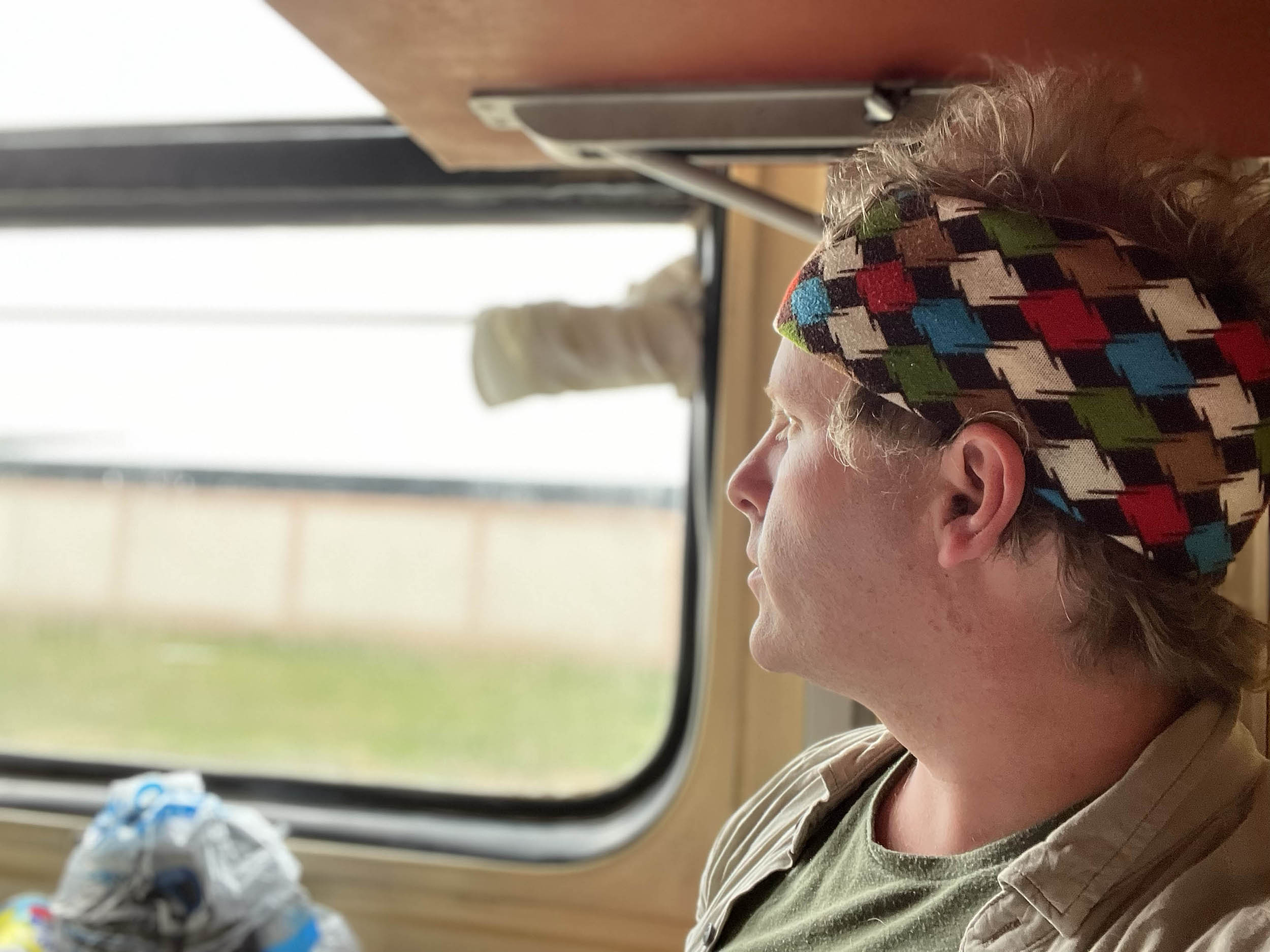
You can also book them the day before, in person, from the train station. Don’t forget to take your passport.
If you aren’t strictly following this itinerary and would prefer to skip Fergana Valley and work backwards from Khiva to Samarkand and Bhukara before returning to Tashkent, I’d consider taking the night train (direct between Tashkent and Khiva). It takes 14 hours.
Bus and Marshrutka
Intercity buses and marshrutkas provide reliable alternatives for transport between Tashkent and other cities.
THE FERGANA VALLEY (Days 3, 4, & 5)
The Fergana Valley, while lesser known, holds a complex and often controversial place in Central Asian history. This region has been at the heart of significant ethnic and political tensions, largely stemming from the legacy of Soviet-era border demarcations.
When Stalin redrew the maps, he mixed various ethnic groups, leading to Uzbek communities finding themselves within the borders of neighbouring Kyrgyzstan and Tajikistan. Over the years, this has led to various conflicts, including civil unrest and clashes, making the valley a focal point of regional politics.

Despite its turbulent history, the region remains a fascinating destination. In my travels, I’m often drawn to the roads less travelled, and the Fergana Valley is exactly that. Away from the well-trodden tourist paths (of Samarkand, Bukhara and Khiva), it offers an unfiltered glimpse into the region's layered history and current realities.
It’s here that you'll encounter some of the country's most welcoming people. The warmth of the people is so palpable that strangers approached me on the street, offering invitations to their homes for tea and meals.
Otherwise, my days were filled by visiting Central Park (anchored by the Al-Ferghani Statue), General Skobelev’s mansion, and Fergana State University.



The Bazaar was a highlight.



Dining at Traktir Ostrov Sokeovish and Lag'mon D, I enjoyed local cuisine in lively settings. Evenings often found me at Brown Sugar Coffee Shop for a relaxed end to the day, where I’d chat with the jovial owner (who gave me a free pot of tea on my final night - the same warmth and generosity I came to really appreciate of Uzbek people by the end).
A day trip to neighbouring Margilan introduced me to the Yodgorlic Silk Factory, where the age-old craft of silk making was on full display. I was joined by an exemplary student of an Uzbek IELTS teacher I met at Topchan Hostel in Tashkent. Sarvarbek was my impromptu guide for the afternoon … and what fun we had!


The Ikat House showcased the region's textile artistry, as did Said Ahmad Xo'ja Madrasasi. Combinat Bazaar was a window into local trade.


While Andijon and Kokand were accessible, I chose to stay closer to Fergana, finding ample interest and variety in the places I visited.
Accommodation - Staying in Fergana
Budget
Sakura - This charming inn combines comfort with character, offering a welcoming and homely atmosphere. Its convenient location makes it an ideal base for exploring the city, and the friendly owner is always available to ensure a pleasant and memorable stay.
Mid-range
Asia Hotel Fergana - I didn’t stay here but I’d had it as a second choice on my list of possible accommodation options had Sakura been full. The reviews are good (with a score of above 8). The location is central.
Transportation - Getting around the Fergana Valley
Bus
Buses in the Fergana Valley offer an affordable way to travel between cities and towns. While they are economical, they don’t always adhere to a strict schedule and routes can sometimes be limited.
Marshrutka
Marshrutkas offer a balance between cost and convenience, running on set routes without a fixed timetable and departing once full. They are quicker than buses and cheaper than private taxis, making them a preferred choice for shorter and medium-length journeys within the valley.
Transportation - Getting to The Fergana Valley
Train
Reaching the Fergana Valley was fairly simple. I spent the morning of the third day travelling between Tashkent and Margilan.
I’d pre-booked a ticket. Then, on the day of travel, with a printed copy in hand, boarded a train on platform 2 in Tashkent, settling into my spot in the 2nd class, on carriage 4, in bed 32 - an upper berth.
The journey arrived in Margilan, the city adjacent to Fergana. From there, I opted for the convenience of a Yandex ride, which transported me directly to the guesthouse in Fergana. I think buses and marshrutkas are available between the station and the centre of Fergana.
Bus and Marshrutka
To access the Fergana Valley, buses and marshrutkas provide practical alternatives to trains. They connect major cities like Tashkent to the Valley, with marshrutkas offering the flexibility of frequent departures. Both are cost-effective.
SAMARKAND (Days 6, 7, & 8)
In Samarkand, every step felt like a leap across centuries, a dance through layers of time and culture. The city wasn't just a destination; it was a living museum, pulsating with the legacy of warriors and scholars.
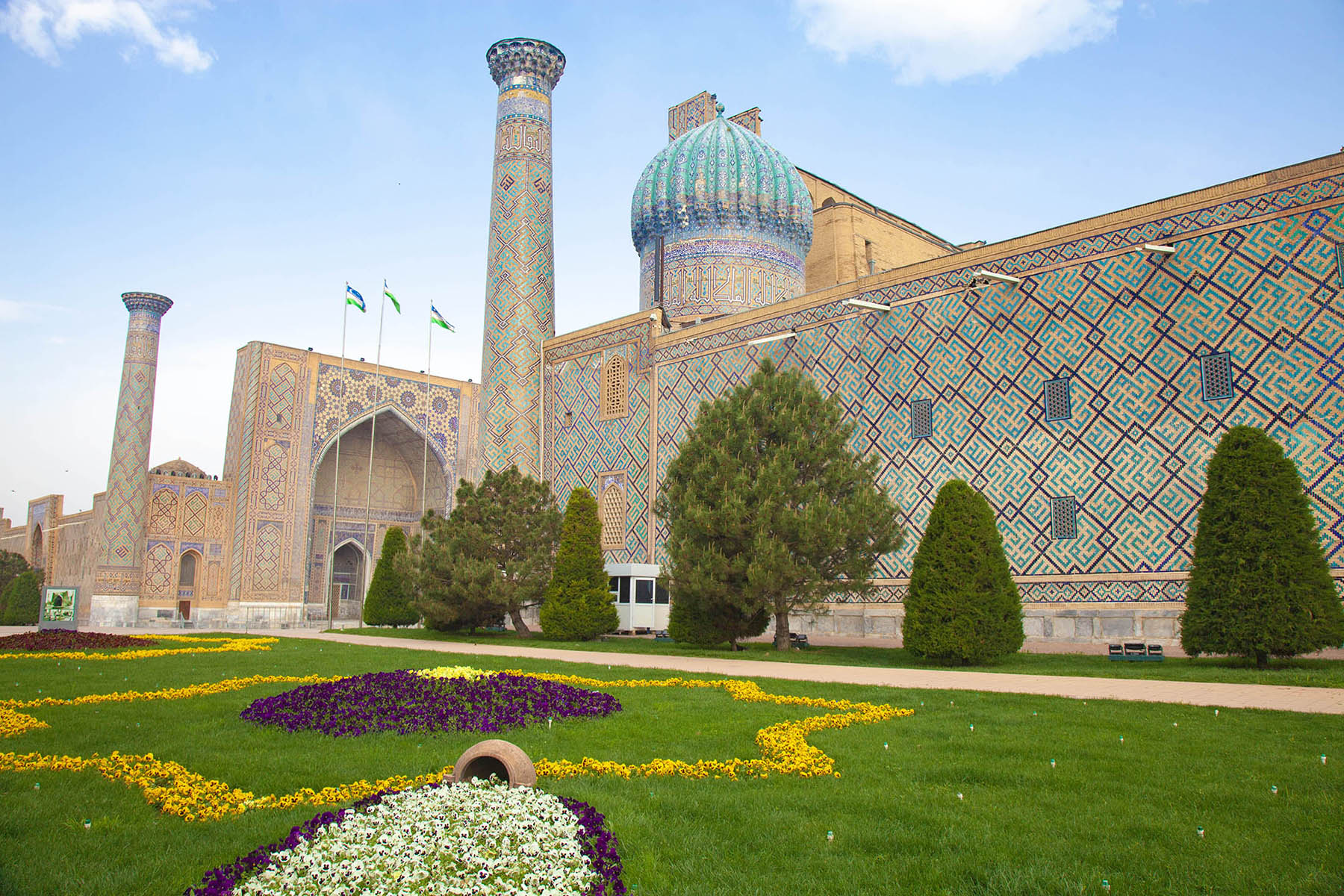
In terms of grandeur and the sheer magnitude of historical sites, I daresay Samarkand was my favourite place in Uzbekistan.

It’s a city steeped in history and legend, and it unfolded its treasures to me from the start, each moment – and photograph - offering a deeper connection to its past. It is a cornerstone of the Silk Road's legacy.
The Registan, with its trio of majestic madrassas, was not just a square but a grand stage where history played out in sandstone and azure tiles. Visit twice: pay once to enter; then return at sunset (in the gardens on the periphery) and capture the tilework under the colours of the setting sun while leaning against the waist-high fence.

Venturing into the heart of Timur's empire, I found myself under the towering dome of Gur-i-Amir. It was more than a mausoleum; it was a silent ode to the might and artistry of a bygone dynasty. The Amir Timur monument stood as a sentinel in the city, his gaze seemingly fixed on the horizon of his once vast empire.

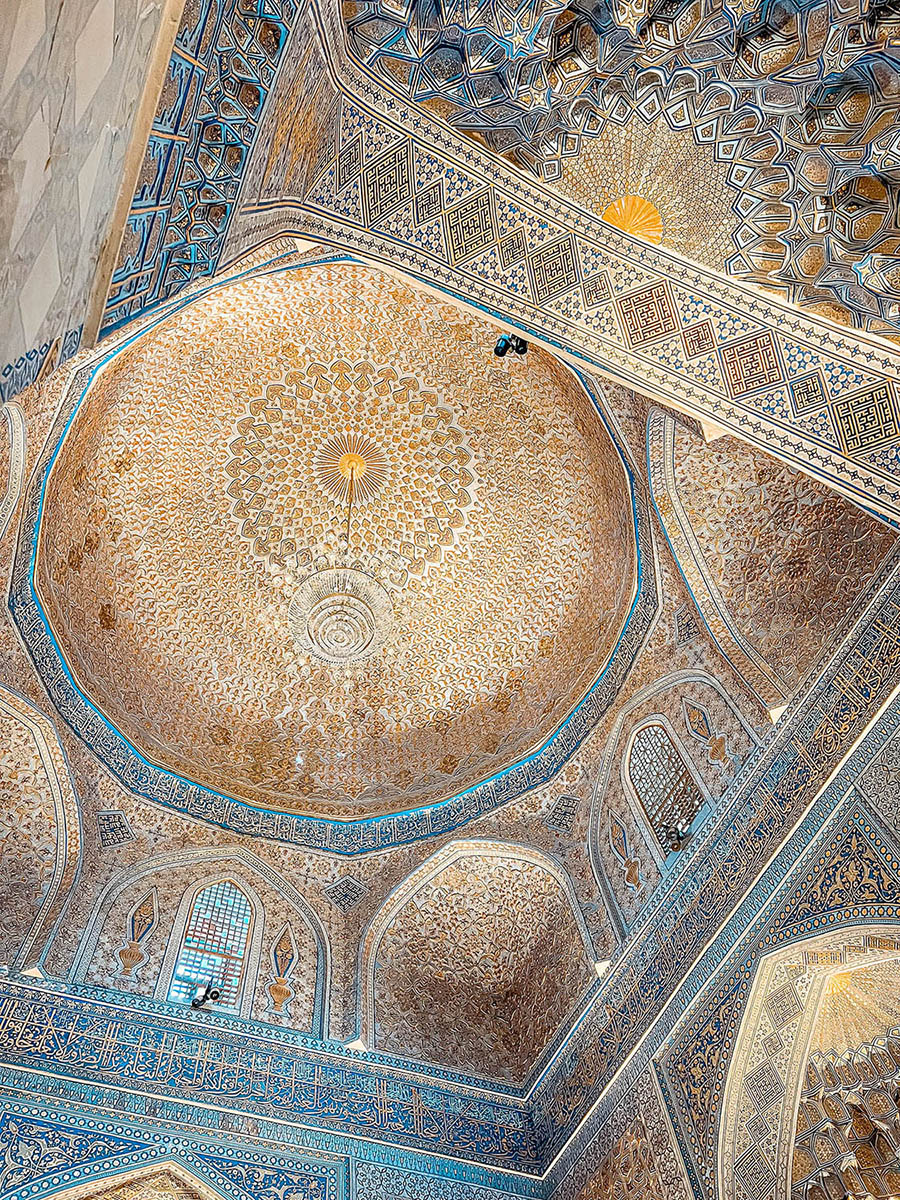
The colossal Bibi-Khanym Mosque whispered tales of imperial ambition and love, its walls holding secrets of a queen's devotion. Nearby, the serenity of Hazrat Khizr Mosque offered a tranquil retreat, a spiritual sanctuary amid the city's historic grandeur.
Shah-i-Zinda was like walking through a corridor of time, each mausoleum a doorway to a different era, the intricate tilework narrating stories of those entombed within. This avenue of the dead was a celebration of life and artistry. Ensure you visit just before sunset for impressive photos.



Beyond these historical giants, my time here (mostly on foot) took me to the lesser-known corners of Samarkand. In the Russian quarter, the Hovrenko wine factory was a revelation of local flavours (although I didn’t do the tasting but bought a bottle instead), a testament to the city's diverse cultural palate. The Old Jewish Quarter unfolded its own narrative, from the steamy Hammomi Davudi to the solemnity of the Gumbaz Synagogue and the Makhdumi Mosque.

These were but a few of my personal highlights.
Accommodation - Staying in Samarkand
Budget
Old Radio Hostel - Its clean, comfortable rooms are arranged around an enchanting courtyard, and the friendly owner adds a personal touch, all nestled right in the heart of the city.
Mid-range
Jahongir Premium - For a mid-range stay in Samarkand that provides a blend of local ambiance and modern amenities, Jahongir Hotel is it. Guests remark on the hotel's authenticity and warmth, evident in its traditionally adorned common areas that reflect Uzbek artistry. With a location that’s moments away from the Registan, Jahongir offers a stay that's both convenient and culturally immersive.
High End
L'Argamak Hotel - Discover the charm of Samarkand at L'Argamak Hotel, where traditional elegance meets contemporary luxury. Nestled in the historic heart of the city, this boutique hotel invites you to unwind in its beautifully appointed rooms, savour the views from the rooftop terrace, and stroll to the iconic Registan Square just minutes away. It’s an iconic high-end hotel!
Transportation - Getting around Samarkand
On Foot
Samarkand's historic core, with its network of monuments and landmarks, is comfortably navigable on foot. Walking allows for a leisurely pace to admire the city's intricate architecture and vibrant street life, especially within the areas around Registan Square and Gur-e Amir.
By Bus
For longer distances, Samarkand's bus network connects the main attractions and residential areas. Buses are cost-effective and frequent, providing a window into the local way of life.
Cycling
Cycling is an emerging mode of transport in Samarkand, with some hotels and hostels offering bike rentals. It's a fast and eco-friendly way to cover more ground, especially for sights that are further apart. In saying this, I rarely saw anyone riding bicycles (but who’s to stop you being the first?).
By Yandex/taxi
I nearly always avoid them (and always have done) but taxis are a convenient option for getting around Samarkand. For a more streamlined service, Yandex is available and can be easily used through its mobile app, offering transparent pricing.
BUKHARA (Days 9 & 10)
Bukhara unfolds like a story from another time, contrasting Samarkand with its intimate charm and dense history. Here, where the legacy of Imam Bukhari intertwines with its Silk Road past, the city's compact old town holds treasures in every alley, offering a walk through history that's as beautiful as it is profound.

In Bukhara, history isn't just in the books; it's under your feet, in the air, all around you.
My days here were a dive into a living, breathing museum, where every corner had a story waiting to be discovered. From the reflective calm of the Nodir Devonbegi Madrassah and its accompanying pool to the bustling vibrancy of the Lyabi-Hauz area, each step was a journey through time.


Wandering through the covered bazaars of Toki Saffaron and Toqi Zargaron was like walking through the heartbeat of the city. The white domes, the buzz of local commerce, the smell of fresh halva, and the allure of exquisite fabrics – it was a sensory feast. It was, perhaps, my favourite activity in Bukhara.

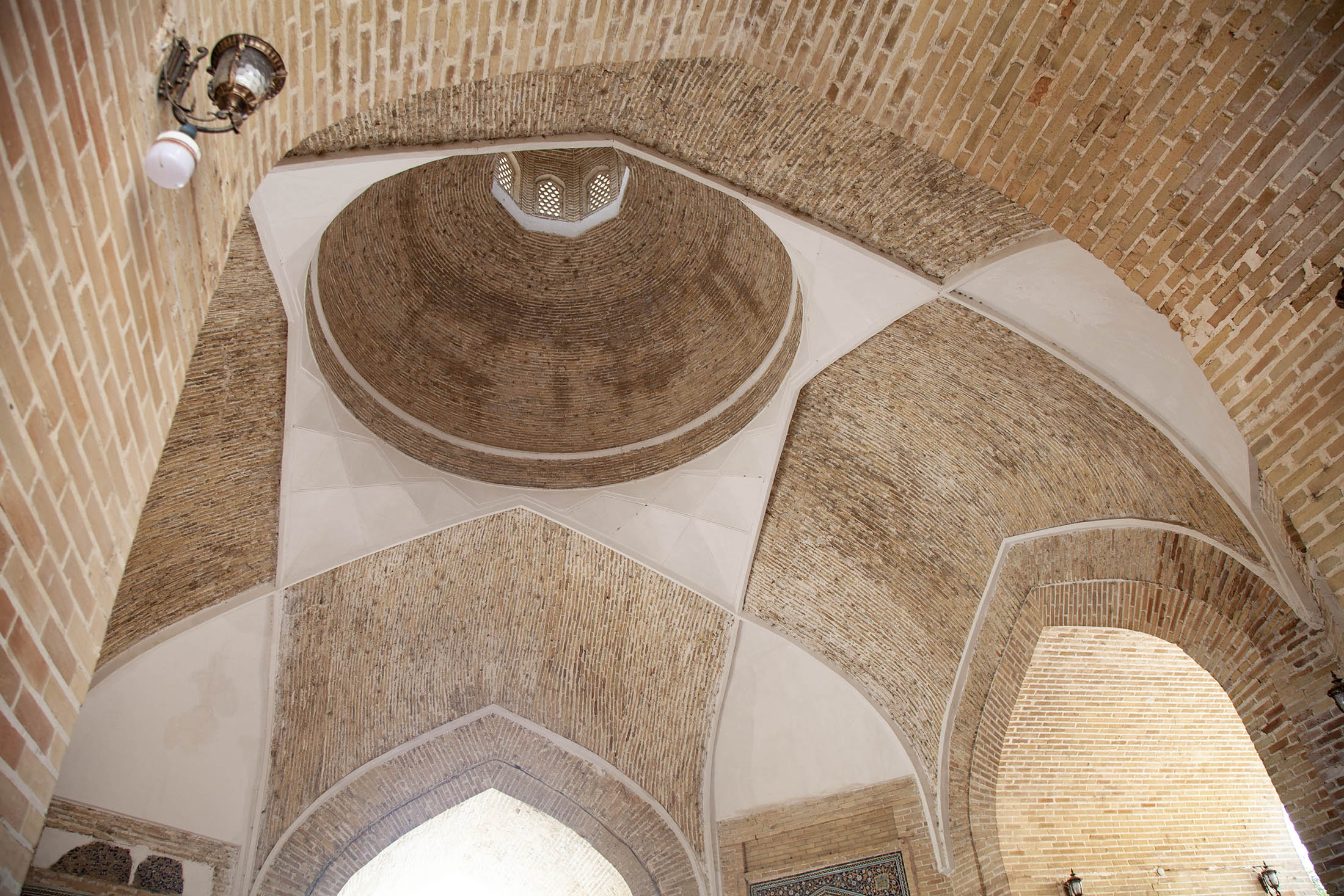
The Abdulaziz Khan Madrassah and the Mirzo Ulughbeg Madrassah stood as architectural wonders, while the sight of the imposing Kalon Minaret left me in awe.
Evenings in Bukhara brought their own magic. A fashion show at the Nadir Divanbegi Madrassah (although a bit of a tourist trap), was a blend of tradition and contemporary flair, where vibrant fabrics came to life.
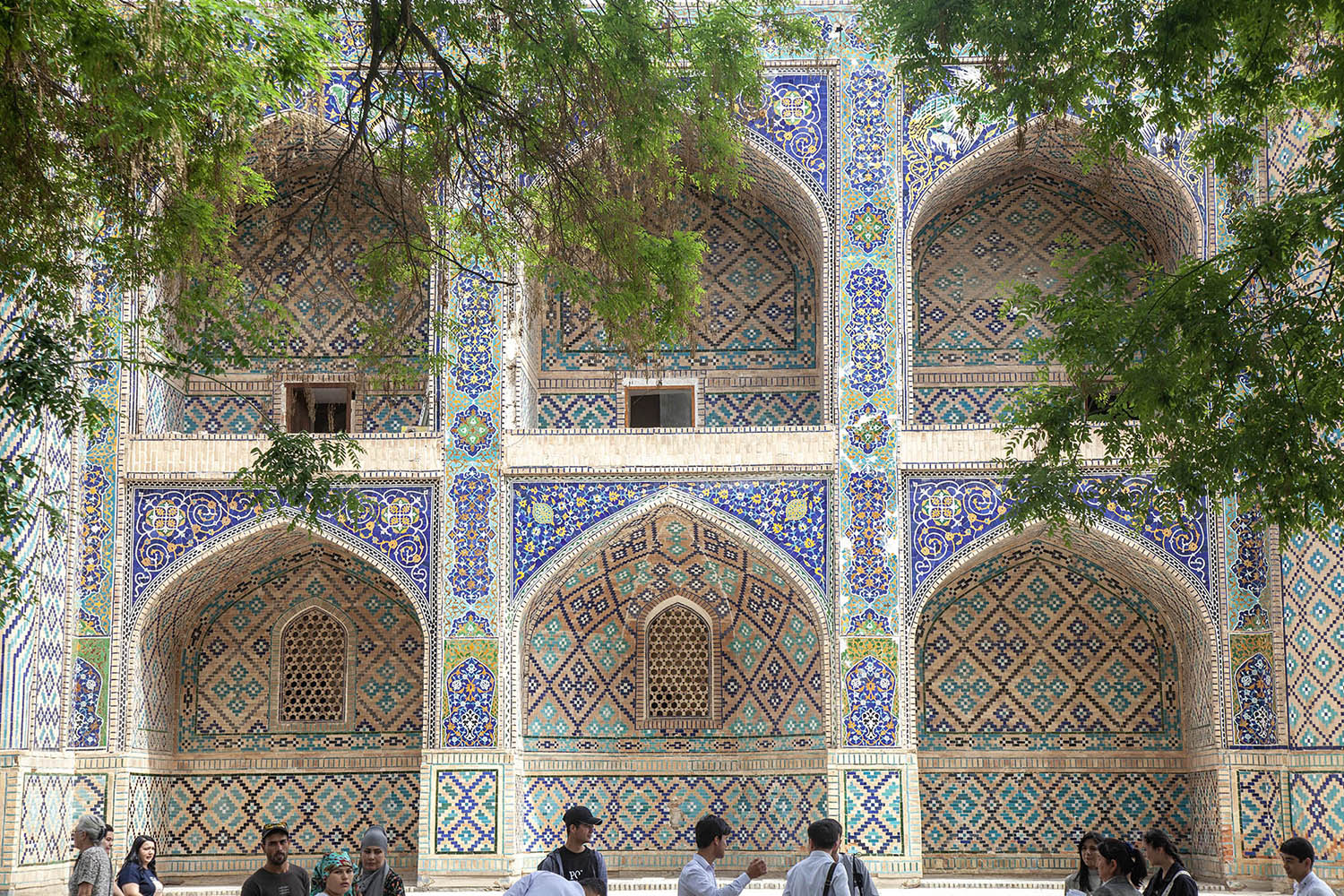
Finding a spot for dinner was an adventure, leading me to the rooftop terrace of Chinor, where lamb dumpling soup and beetroot salad became my memorable meal.
From the Ark Fortress with panoramic city views to the tranquil Char Minar and the opulent Sitorai Mohi Hosa Palace, each visit added layers to my understanding of this historic city.

Accommodation - Staying in Bukhara
Budget
Rumi - The staff were genuinely helpful, and the pricing was reasonable, striking a good balance between cost and comfort. Location-wise, it was ideally situated, just a short 5-10 minute walk from the city's key attractions, making exploration a breeze.
Mid-Range
Hotel Malika Bukhara - For a comfortable mid-range stay in Bukhara, consider Hotel Malika Bukhara, which offers a spa centre and a rich breakfast buffet with national and European dishes. It's centrally located, just 50 meters from the Lyabi Havuz Complex, ensuring that major attractions are within easy walking distance.
High End
Boutique Hotel Minzifa - This is a place for a more luxurious experience, praised for its traditional Uzbek design and prime location close to significant historical sites like the Great Minaret of the Kalon and the Ark of Bukhara. It features a serene garden, a shared lounge, and rooms equipped with modern amenities.
Transportation - Getting around Bukhara
On Foot
Transportation around Bukhara is convenient given its compact nature, with most historical sights accessible on foot.
I walked almost everywhere. It was the best way to explore the intricate details of Bukhara's old city.
Yandex/Taxi
To get from the bus or train stations located in Kagan, the new part of the city, to the old city centre, a Yandex ride or taxi is recommended.
Transportation - Getting to Bukhara
By Train
On day 9 of my itinerary, I boarded a morning train from Samarkand to Bukhara in the comfort of VIP class.

It was a decision that added a touch of luxury to my journey, despite feeling a bit out of place with my backpacker's attire.


The trip was brief, arriving before midday, which provided a full afternoon for exploration in Bukhara. Booking in advance, I’d been able to secured a premium experience that proved to be a lovely indulgence.
By Bus and marshrutka
Buses and marshrutkas, as always, are available. They’re cost-effective.
By Taxi or Private Car
For more convenience and flexibility, particularly between Samarkand and Bukhara (which isn’t far), hiring a private taxi or car can be quick albeit expensive. It may be a good option if train tickets are sold out, you don’t feel like being crammed into a marshrutka, or you are travelling as part of a group (or with lots of luggage).
KHIVA (Days 11, 12 & 13)
Khiva, a city seemingly carved out of a fairy tale, stands as a living testament to Central Asian medieval architecture and culture. Its well-preserved Ichon-Qala, the walled inner town, is a UNESCO World Heritage site, offering an immersive journey into a past where minarets touch the sky and madrassahs whisper stories of scholars long gone.
It’s here where all the sights are consolidated in one area (the most famous being Kalta Minor), so all you need to do is wander around the alleys and bump into them every few metres - it’s a real adventure!

My exploration began with a 2-day ticket to Ichon-Qala (which can be purchased at the West Gate … for 150,000 UZS - they’re not available at the South Gate). The Kalta Minor Minaret and West Gate served as my introduction, their grandeur setting the tone. At Kuhna Ark, the panoramic views were breath-taking (despite the haze that had set in), complementing the intriguing Zindon, summer mosque, and watchtower within its walls.

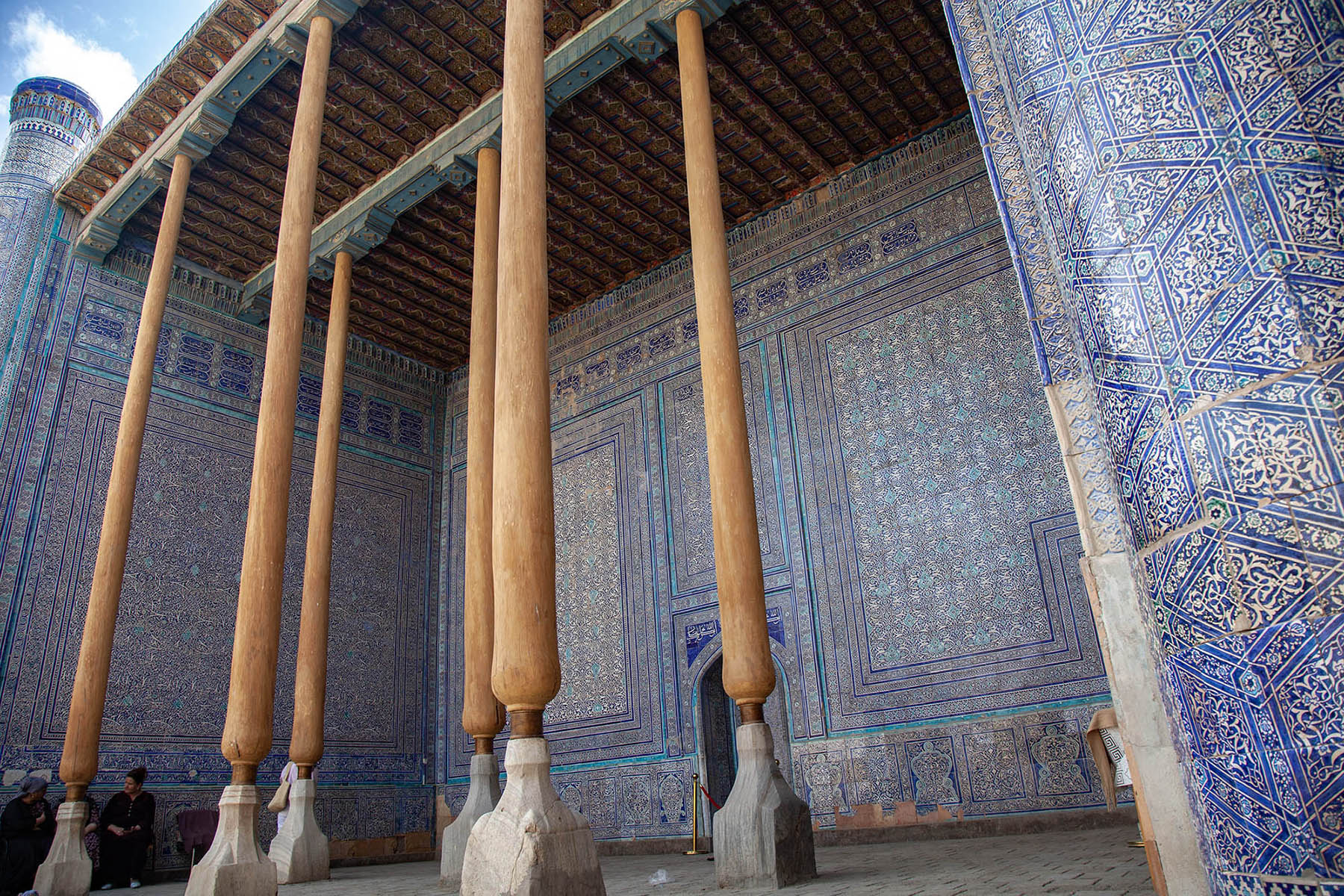
Wandering further, I came across the Mohammed Rakhim Khan Madrassah. The Museum of the Khorezm Khans, unfortunately closed during my visit, left me curious about its hidden treasures.
As I moved through the city, a dust storm swept through, adding a dramatic flair to the landscape. At the Yakub Bay Khodja Madrassah, a beautiful green scarf caught my eye, a souvenir I couldn’t resist. The Pahlavon Mahmud Mausoleum, with its entrance fee of 25,000 UZS, remained unchecked, but it was beautiful from the outside.

The Juma Mosque, with its forest of wooden columns, was an architectural marvel (and one of my favourite sites in Khiva), while the Islom Hoja Medressa housed exquisite jewellery within its museum.

A dinner of Shivit Oshi at Terrassa Cafe offered a culinary respite. The day continued with visits to Toshhovli Palace, the Khojamberdibai Madrassah, and a return to the Pahlavon Mahmud Mausoleum, which, upon entering (after having decided to fork out 25,000 UZS for a ticket), was as stunning inside as it was outside. The chandelier was spectacular, and it scintillated while men prostrated themselves in front of the tomb, praying through song in exotic and melodic tones – what a moment!


Leaving the old city walls behind, I wandered and bought local treats from a market and watched old men play cards in the street - simple moments that connected me to the everyday life of this timeless city.
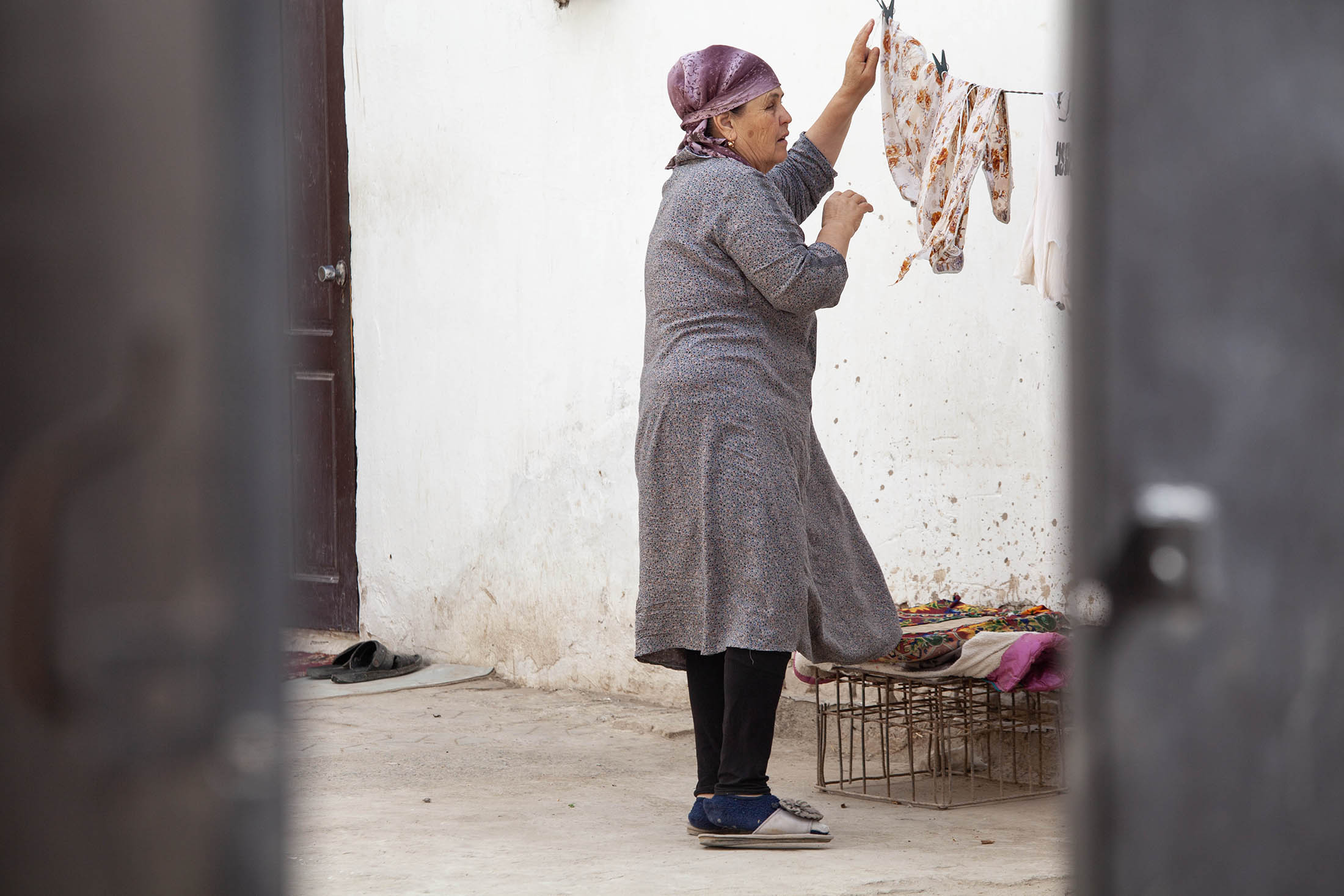

My walk along the northwestern wall, though it came with an extra cost (20,000 UZS), offered a unique perspective of Khiva's ancient fortifications.

I’d planned three days in Khiva because, on the third day (day 13), I’d wanted to do a daytrip (although long and enduring and perhaps ill-advised) to the Aral Sea. But alas, I was unwell, so it was mostly spent in bed.
Two full days are likely enough for Khiva.
Accommodation - Staying in Khiva
Budget
Guest House Dilorom - Located near the city centre, it's just a short walk away from major attractions. It’s run by a lovely young Uzbek family, who are very welcoming and helpful.
Mid-range
Islam khodja - My stay was elevated by the warmth and professionalism of the family who run it. Drawing from their extensive experience in hospitality, they created an environment that felt like home, especially when I fell ill and they went above and beyond to assist me, ensuring I had everything I needed, including a trip to the pharmacy.
Their kindness extended to personal touches like sharing meals; I even had the opportunity to join in cooking with them by a bonfire, an experience that truly enriched my stay. The breakfasts here were not only generous but also scrumptious, setting the tone for the day ahead.
The amenities at Islam Khodja were impressive: the establishment boasts spacious rooms with private bathrooms, ensuring comfort and privacy. Given the quality of the facilities and the level of service, it presented great value for money. Its location inside the old city further added to its allure, placing me right in the heart of Khiva’s historic wonder.
High End
Shaherezada Boutique Hotel – This is an excellent choice. Located in a prime spot within the old city walls, it's a favourite among travellers for its beautiful decor, cleanliness, and top-notch service.
Transportation - Getting around Khiva
On Foot
Getting around Khiva is quite straightforward as the old city area is very compact. Most of the historical sites can be easily accessed on foot.
The city is pedestrian-friendly – I only once used a taxi, to get to the pharmacy and back when I was ill. Otherwise, it wasn’t needed.
Transportation - Getting to Khiva
Train
I took the night train between Bukhara and Khiva, departing just after midnight on day 10 and arriving during the morning of day 11. It was a comfortable and fairly seamless journey (although I almost missed departure as I was waiting on the wrong platform!).
If you can secure a ticket, the train is the best way to go on this route.
Marshrutka
Shared taxis are a common and cost-effective way to reach Khiva (particularly from Bukhara). The journey usually takes about 7 hours and can be arranged at places like Kharvan Bazaar in Bukhara.
RETURN TO TASHKENT (Day 14)
Be ready for the long ride!
I’d been unwell on my last day in Khiva, so the 16-hour ride (during daylight hours) wasn’t as enjoyable as I’d hoped. But in better circumstances, I can imagine having had a more contemplative journey, using the time to reflect on the experiences of my trip.


The changing landscapes outside the window are a perfect backdrop for reminiscing about the adventures in each city and the people you’ll have met along the way. Such a long journey is also a great way to catch up on reading, listen to music, or even strike up conversations with fellow travellers, sharing stories, tips, tea, and food.
Extend Your Uzbekistan Itinerary Beyond 2 Weeks?
Extending your itinerary beyond two weeks opens the door to exploring the enigmatic Aral Sea and the Desert Castles of Ancient Khorezm.
ARAL SEA
The Aral Sea, once one of the world's largest lakes, now stands as a poignant symbol of environmental change. Visiting this area can be a profound experience, revealing the stark yet compelling beauty of a landscape reshaped by human impact.
While a day tour to the Aral Sea is feasible, it's a considerable journey from Khiva, often involving an expensive and lengthy trip.
Travelling independently to Nukus sets the stage for a deeper exploration of the Aral Sea crisis. From Nukus, further public transport is available to Moynaq, a location that starkly showcases the extent of the environmental devastation.
This once-thriving harbour, now eerily located about 150 kilometres from the current seashore, paints a vivid picture of the sea's retreat. Beside the harbour lies a ship graveyard, where the skeletal remains of boats rest on what was once the seabed. This scene powerfully encapsulates the dramatic transformation of the area and stands as a stark reminder of the Aral Sea's tragic history.
For those who make the journey, the experience is likely unparalleled.
DESERT CASTLES OF ANCIENT KHOREZM
The Desert Castles of Ancient Khorezm are a window into the region's rich history, scattered across the Kyzylkum Desert. These remnants of fortresses, once the epicentre of the powerful Khorezmian civilisation, stand as silent sentinels amid the sands.
Exploring these ancient ruins, some dating back to the 7th century, offers a unique glimpse into a long-gone era of desert kingdoms and trade routes … but it can only be done by car (either through hiring one, or going on an organised tour).
The experience is apparently akin to stepping into a forgotten world.
2-Week Uzbekistan Itinerary: Conclusion
As the final grains of sand slipped through the hourglass of my 2-week journey across Uzbekistan, I found myself reflecting on experiences that spanned both time and emotion. The ancient Silk Road, more than just a route of trade and conquest, unveiled itself as a path to a deeper understanding of a region that pulses with the heartbeat of history.
This journey was more than an itinerary; it was a pilgrimage through the annals of human endeavour, a quest that brought me face to face with the soul of a land etched in the annals of history.

My encounters with the warm and hospitable people of Uzbekistan were as enriching as the sights I saw. From shared meals to spontaneous conversations, each interaction added a human touch to the journey.
To those who yearn for a journey that intertwines the past with the present, Uzbekistan beckons. It promises not just sights and sounds, but an immersion into a world where every stone, every street, and every face has a story to tell.
So, take this adventure and let the ancient Silk Road guide you through the wonders of Uzbekistan, a land where history breathes and dreams are woven into reality.
More Resources to Help you Plan your Uzbekistan Itinerary
On my Travel Resources, Travel Companies Page, you'll discover a comprehensive list of websites and services that I rely on for booking hotels, tours, travel insurance, and other essentials.
